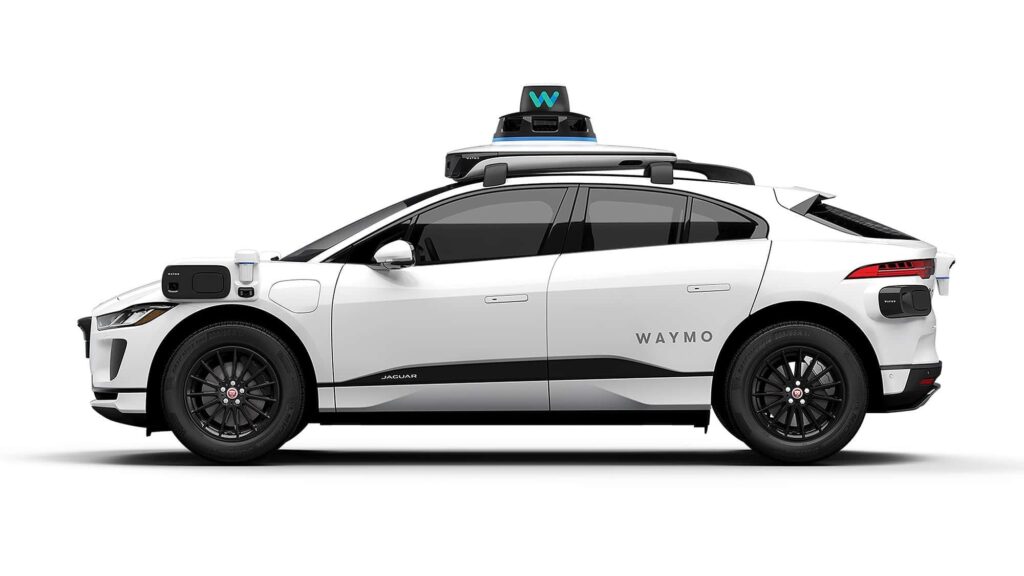Waymo Granted Permit to Test Autonomous Vehicles in New York City
In a significant development for the future of urban transportation, Waymo, the self-driving technology company and subsidiary of Alphabet Inc., has received official approval to conduct road tests of its autonomous vehicles in New York City. This groundbreaking permit marks a pivotal step in the integration of autonomous driving technology within one of the busiest and most complex urban environments in the world. As cities grapple with the challenges of traffic congestion and air quality, Waymo’s initiative could pave the way for innovative solutions in public transportation and mobility. The testing is set to begin in the coming weeks, raising questions about the safety, regulatory frameworks, and potential shifts in how city dwellers navigate their daily commutes. With a focus on advancing technology while prioritizing public safety, Waymo’s foray into New York City promises to spark discussions about the future of transportation in urban landscapes.
Waymo’s New York City Permit Marks a Major Step in Urban Autonomous Vehicle Testing
Waymo has officially received a permit to test its autonomous vehicles within the bustling streets of New York City, a significant milestone that enhances the evolution of urban mobility. This permit not only showcases the company’s commitment to expanding its operational footprint but also highlights the growing acceptance of self-driving technology in urban environments. New York, with its unique traffic patterns and diverse population, presents both challenges and opportunities that could lead to innovative solutions in transportation logistics and safety.
The implications of this permit extend beyond just the immediate benefits to Waymo. Some key aspects include:
- Enhanced Safety Protocols: Waymo is expected to implement rigorous safety standards to navigate the complex dynamics of New York traffic.
- Public Acceptance: The presence of autonomous vehicles may foster public interest and spur discussions on the future of urban transport.
- Data Collection: The varied driving conditions in NYC will allow for valuable data collection, helping to improve AI algorithms for self-driving systems.
| Key Benefits | Description |
|---|---|
| Traffic Efficiency | Advanced algorithms can optimize traffic flow and reduce congestion. |
| Environmental Impact | Potential reduction in carbon emissions through optimized driving patterns. |
| Accessibility | Improved transport options for those with mobility challenges. |
Implications for Public Safety and Traffic Management in Dense Urban Environments
The recent grant of a permit for Waymo to test its autonomous vehicles in New York City opens a new chapter for public safety and traffic management in one of the world’s busiest urban landscapes. The introduction of self-driving technology promises to enhance safety by reducing human error, which is a major contributor to traffic accidents. With the potential for real-time data collection and adaptive traffic responses, these vehicles can help to:
- Decrease congestion by optimizing route selection and traffic signal timings.
- Enhance road safety through advanced sensing technologies that detect and react to dynamic urban environments.
- Support emergency services by providing prioritized lanes in critical situations.
However, the incorporation of autonomous vehicles also presents challenges that must be addressed for the benefit of public safety. One major concern is ensuring that these vehicles interact safely with various road users, including pedestrians, cyclists, and traditional vehicles. A study comparing traditional vehicle response times with those of autonomous vehicles highlights critical areas of focus:
| Vehicle Type | Average Response Time (seconds) |
|---|---|
| Human-Driven Vehicle | 1.5 |
| Autonomous Vehicle | 0.6 |
Addressing these complexities will necessitate collaboration among city planners, traffic authorities, and technology developers to create integrated systems that safeguard all road users. Through careful assessment and implementation of policies, New York’s move towards an autonomous transportation future could revolutionize urban mobility while prioritizing the safety of its residents.
Recommendations for Effective Integration of Autonomous Vehicles into City Infrastructure
As cities prepare for the influx of autonomous vehicles (AVs), it’s vital to incorporate a range of strategic moves to ensure smooth integration. Key considerations for city planners and transportation officials include:
- Infrastructure Adaptation: Streets should be designed with dedicated lanes for AVs, equipped with advanced sensors and communication technology to facilitate seamless interaction with traffic signals and other vehicles.
- Data Sharing Initiatives: Implementing open data protocols between AV operators and city departments will enhance safety and efficiency. This can help in real-time traffic management and reduce congestion.
- Public Awareness Campaigns: Educating residents about AV benefits and operational protocols can alleviate concerns and promote user acceptance.
To optimize the effectiveness of AV operation, municipalities should also consider emerging technologies in traffic management. A potential framework could include:
| Technology | Description |
|---|---|
| Smart Traffic Signals | Signals that communicate with AVs to enhance response times and traffic flow. |
| Vehicle-to-Everything (V2X) Communication | Allows AVs to interact with infrastructure, other vehicles, and pedestrians for improved safety. |
| Real-time Mapping | Dynamic maps that reflect traffic patterns, obstacles, and construction updates to ensure safe navigation. |
In Conclusion
In conclusion, the recent permit granted to Waymo to test its autonomous vehicles in New York City marks a significant milestone in the evolution of self-driving technology. As one of the most complex urban environments in the world, New York presents unique challenges that will test the capabilities of autonomous systems. With rigorous safety standards and a commitment to innovation, Waymo’s trials could pave the way for a new era of transportation in densely populated areas. As developments unfold, the attention will be on how these tests affect pedestrian safety, traffic dynamics, and overall public perception of autonomous vehicles. This initiative not only reflects the growing integration of technology in our daily lives but also highlights the regulatory and infrastructural changes necessary to accommodate the future of travel in our bustling metropolitan landscapes. As we look forward to the results of these tests, one thing is clear: the journey towards fully autonomous urban mobility is well underway.
